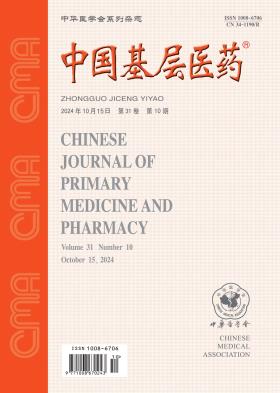Comparison of stent-assisted and non-stent-assisted coils in the treatment of ruptured wide-necked anterior communicating artery aneurysm in acute stage
引用次数: 0
Abstract
Objective To compare the safety and efficacy of stent-assisted and non-stent-assisted coil embolization in the treatment of anterior communicating ruptured wide-necked aneurysms in acute phase. Methods The clinical data of 76 patients with anterior traffic rupture wide-necked aneurysm treated by interventional embolism from January 2014 to December 2018 were collected in the People's Hospital of Dezhou.According to whether or not stents were assisted during the operation, 76 cases were divided into stent group (41 cases) and non-stent group (35 cases). The stent group selected the Solitaire AB neurovascular remodoring device or the LVIS support for the corresponding size according to the diameter of the patients’ artery, and the non-stent group used a single catheter, a double catheter, or a balloon assist.The perioperative complications, mortality and clinical prognosis between the two groups were compared. Results There were no statistically significant differences in bleeding complications, symptomatic vasospasm, mortality and clinical prognosis between the two groups (all P>0.05). The incidence of ischemic complications in the stent group was 17.07%(7/41), which was significantly higher than that in the non-stent group[2.86%(1/35)](χ2=4.052, P<0.05). The overall complication rate of the stent group was 21.95%(9/41), which was significantly higher than 5.71%(2/35) of the non-stent group (χ2=4.021, P<0.05). Conclusion Both stent-assisted and non-stent-assisted coils can achieve good clinical results in the treatment of anterior communicating ruptured wide-necked aneurysms in acute phase.Stent-assisted embolism has a high incidence of ischemic complications and needs caution in clinical application. Key words: Intracranial aneurysm; Subarachnoid hemorrhage; Embolization, therapeutic; Tissue scaffolds; Postoperative complications; Prognosis支架辅助与非支架辅助线圈治疗急性期宽颈前交通动脉瘤破裂的比较
目的比较支架辅助和非支架辅助线圈栓塞治疗急性期前交通破裂宽颈动脉瘤的安全性和有效性。方法收集2014年1月至2018年12月在德州市人民医院接受介入栓塞治疗的76例前交通性破裂宽颈动脉瘤患者的临床资料,根据术中是否辅助支架,将76例患者分为支架组(41例)和非支架组(35例)。支架组根据患者动脉直径选择相应尺寸的Solitaire AB神经血管移除装置或LVIS支架,非支架组使用单导管、双导管或球囊辅助。比较两组围手术期并发症、死亡率及临床预后。结果两组出血并发症、症状性血管痉挛、死亡率及临床预后差异无统计学意义(均P>0.05),支架组缺血性并发症发生率为17.07%(7/41),显著高于非支架组[2.86%(1/35)](χ2=4.052,显著高于非支架组的5.71%(2/35)(χ2=4.021,P<0.05)。支架辅助栓塞缺血性并发症发生率高,临床应用需谨慎。关键词:颅内动脉瘤;蛛网膜下腔出血;栓塞,治疗;组织支架;术后并发症;预后
本文章由计算机程序翻译,如有差异,请以英文原文为准。
求助全文
约1分钟内获得全文
求助全文
来源期刊
CiteScore
0.10
自引率
0.00%
发文量
32251
期刊介绍:
Since its inception, the journal "Chinese Primary Medicine" has adhered to the development strategy of "based in China, serving the grassroots, and facing the world" as its publishing concept, reporting a large amount of the latest medical information at home and abroad, prospering the academic field of primary medicine, and is praised by readers as a medical encyclopedia that updates knowledge. It is a core journal in China's medical and health field, and its influence index (CI) ranks Q2 in China's academic journals in 2022. It was included in the American Chemical Abstracts in 2008, the World Health Organization Western Pacific Regional Medical Index (WPRIM) in 2009, and the Japan Science and Technology Agency Database (JST) and Scopus Database in 2018, and was included in the Wanfang Data-China Digital Journal Group and the China Academic Journal Comprehensive Evaluation Database.

 求助内容:
求助内容: 应助结果提醒方式:
应助结果提醒方式:


